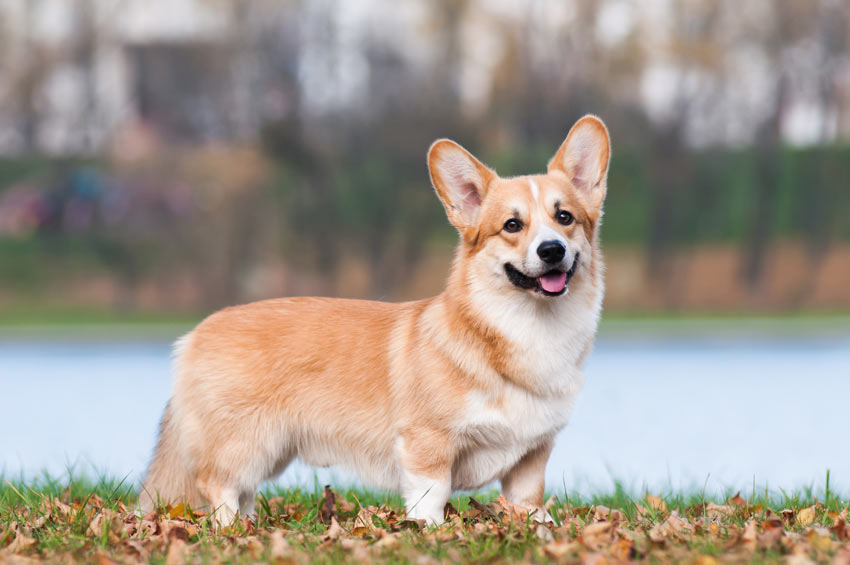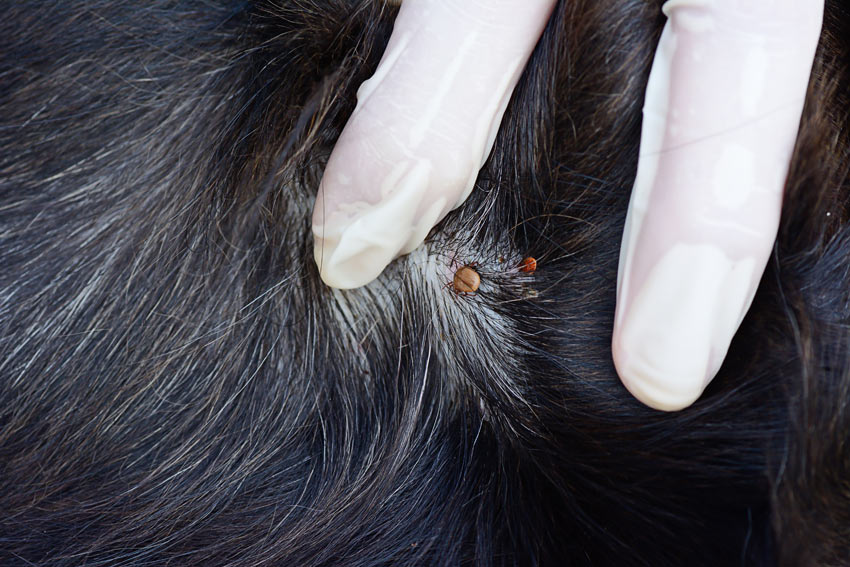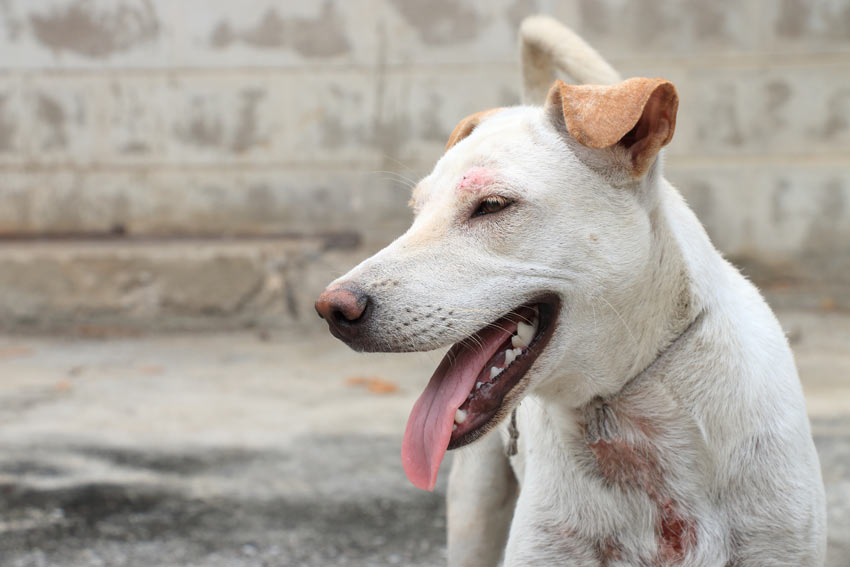Keeping a close eye on the condition of your dog’s coat and skin will prevent any infections or infestations becoming too serious. You will be able to react quickly to any potential problems and keep your dog’s coat healthy, just like this beautiful Pembroke Welsh Corgi.

A Pembroke Welsh Corgi with a beautiful well groomed coat
It is important to check for fleas and ticks and apply ointment provided by your vet when necessary. Regularly brush your dog’s coat to prevent matting and to keep the skin healthy. If the skin feels hot to touch it is a sign of inflammation and should be looked at by your vet. Also check for any dry or red skin as this can be an indication of a bacterial skin infection or a yeast infection.

A dog with a tick on its skin
If you notice any signs of a fever, loss of appetite, itching, painful skin, skin abscesses, pus leaking from the skin or inflammation, your dog may be showing symptoms of a staph infection (staphylococcal infection) which is a highly contagious bacterial infection. It is most often passed on from other dogs, but it can also be passed onto humans, and it can affect all dog breeds at any age.

A dog with a skin condition
Lumps and Bumps
Some breeds are more susceptible to lumps and bumps than others. The general rule is that if you notice a rapidly growing lump or a bleeding lump on your dog you should immediately contact your vet. Make a note of where they are and any changes that they make. A vet will only be able to tell what it is once they have extracted and examined the cells. The natural response is to assume the worst and that they could be cancerous lumps, but a huge percentage of dogs develop deposits of fat called “Lipomas” that are completely harmless. Technically they are benign tumours, and they are most commonly found around the rib cage of middle aged dogs, but don’t panic!






Comments
There are no comments just yet